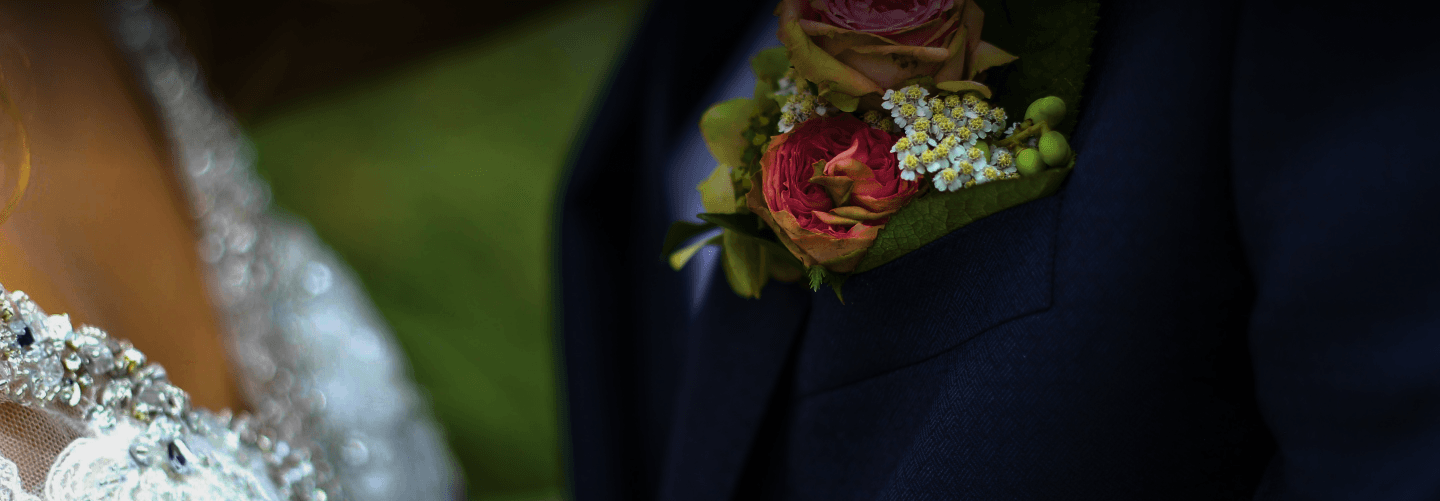
Relationships
UNDERSTANDING ATTACHMENT STYLES AND HOW THEY AFFECT YOUR RELATIONSHIPS
08:40 mins . by Kofoworola Oyelekan . Sep 20th 23
Except you've been living under a rock or are immune to social media addiction, you've likely come across the occasional hot topic of attachment styles. For those who need a quick refresher, let's delve into it.
Attachment styles serve as templates for how we handle relationships, shaped by our early experiences with caregivers. These styles significantly influence how we emotionally respond and behave in relationships, impacting how we form connections with others and navigate intimacy. It's worth noting that attachment styles extend beyond romantic relationships; they also affect various other types of relationships, including friendships, family dynamics, and even professional connections. While attachment styles primarily develop in the context of early caregiver interactions, they continue to influence our behaviors and interactions throughout our lives across different relationship domains.
These attachment styles can profoundly impact how individuals perceive and respond to social interactions, their levels of trust, and their ability to engage in emotional intimacy within all types of relationships. Understanding one's own attachment style, as well as the attachment styles of others, can provide valuable insights into interpersonal dynamics, help identify areas for potential growth and improvement, and foster healthier relationships across different aspects of life.
Types of Attachment Styles
Psychological research has identified several different attachment styles. The four main attachment styles recognized by psychologists are:
- Secure Attachment
- Anxious-Preoccupied Attachment
- Dismissive-Avoidant Attachment
- Fearful-Avoidant Attachment
What Each Attachment Style Can Look Like
Each attachment style exhibits unique characteristics that influence how individuals approach relationships and interact with others. Here's a breakdown of each attachment style:
Secure Attachment Style
A secure attachment style represents a healthy and positive way of forming and maintaining relationships. It originates in childhood when caregivers consistently respond to a child's needs. People with a secure attachment style typically display the following behaviors in their relationships:
- Comfort with Closeness: They feel comfortable with emotional closeness and can openly discuss their feelings and needs without fearing rejection or abandonment.
- Trust and Reliability: They trust their partners and believe their partners will be there when needed, relying on their partners' reliability.
- Effective Communication: They excel in sharing their thoughts and feelings and are adept listeners. They can resolve issues without becoming overly upset.
- Independence: They maintain their independence within the relationship and don't feel anxious when their partner requires space.
- Emotional Control: They can manage their emotions, calming themselves when upset without overreacting or shutting down.
- Openness: They can honestly express their fears, insecurities, and deeper emotions without negative self-perception.
- Supportive and Caring: They show genuine concern for their partner's feelings, providing assistance during difficult times and celebrating their partner's successes.
- Positive Views: They hold positive opinions of both themselves and their partner, believing they deserve love and that their partner genuinely cares for them.
- Adaptability: They can adapt to changes and challenges within their relationships without becoming too distant or clingy.
- Long-Lasting Relationships: Those with a secure attachment style often maintain stable and enduring relationships due to their ability to navigate the highs and lows healthily.
Anxious-Preoccupied Attachment Style
The anxious-preoccupied attachment style, often referred to simply as the anxious attachment style, is one of the four main attachment styles identified in attachment theory. Individuals with this attachment style tend to be overly preoccupied with their relationships and exhibit certain behavioral and emotional patterns characteristic of this style. Here are common traits and behaviors associated with the anxious-preoccupied attachment style.
- Fear of Abandonment: Individuals with this style constantly worry that their partner might abandon them.
- Strong Need for Reassurance: They have a significant need for constant reassurance and validation from their partner.
- Overthinking and Overanalyzing: People with an anxious attachment style tend to overthink and overanalyze details of the relationship.
- Emotional Instability: Frequent emotional ups and downs in response to relationship stress.
- Clinginess and Dependency: There is a fear of being alone, leading to clinginess and excessive dependency on their partner.
- On-Again, Off-Again Dynamics: A pattern of on-again, off-again dynamics in the relationship.
- Difficulty Setting Boundaries: They often struggle with setting healthy boundaries and may have low self-esteem.
- Idealization and Disappointment: They tend to idealize their partner at the start of the relationship but may later feel disappointed.
Dismissive-Avoidant Attachment Style
The dismissive-avoidant attachment style, also known as the avoidant attachment style or anxious-avoidant attachment, is one of the four main attachment styles identified in attachment theory, developed by John Bowlby and Mary Ainsworth. People with a dismissive-avoidant attachment style tend to exhibit certain behavioral and emotional patterns in their relationships. Here are key characteristics of individuals with a dismissive-avoidant attachment style:
- Hyper-Independence: They highly value self-sufficiency and avoid depending on others.
- Emotional Intimacy Avoidance: They struggle to open up emotionally and don't prioritize emotional connection.
- Self-Reliance: They prefer to solve problems independently and may not seek help when needed.
- Downplaying Needs: They tend to downplay their own feelings and may not always express when they're hurt or need reassurance.
- Fear of Vulnerability: Avoiding becoming too close or dependent on others is common to protect themselves.
- Commitment Challenges: Long-term commitment can be challenging for them, and they may actively avoid it.
- Difficulty Expressing Love: Expressing love verbally and showing affection can be difficult for them.
- Prioritizing Independence: They often prioritize their needs over the needs of the relationship.
- Withdrawing: In times of conflict or problems, they tend to distance themselves instead of openly discussing issues.
Fearful-Avoidant Attachment Style
The fearful-avoidant attachment style, also known as disorganized attachment, represents a complex and often contradictory pattern of attachment behavior. Individuals with this attachment style typically exhibit a mixture of traits associated with both anxious and avoidant attachment styles. Here are some commonly associated characteristics and behaviors of the fearful-avoidant attachment style:
- Mixed Emotions: These individuals often have mixed feelings about getting close to others, desiring closeness but fearing potential emotional hurt.
- Trust Issues: Trusting others is a struggle, often stemming from past experiences of feeling let down or abandoned.
- Fear of Abandonment: Similar to anxious individuals, they fear abandonment or rejection but respond by pulling away rather than seeking reassurance.
- Emotional Ups and Downs: They experience emotional highs and lows in their relationships, leading to arguments or withdrawal.
- Push and Pull: They alternate between desiring closeness and pushing people away when they feel vulnerable.
- Self-Sabotage: They may engage in behaviors that undermine their relationships, such as initiating conflicts or avoiding commitment.
- Difficulty in Being Open: Expressing their feelings and needs is challenging, making it difficult to form deep connections.
- Past Hurt: Their attachment style often arises from childhood experiences of trauma, neglect, or inconsistent care.
How Does Your Attachment Style Affect Your Relationships?
Your attachment style can affect your relationships in several ways including:
- Communication: Your attachment style influences how you express your emotions, needs, and boundaries in a relationship. Secure individuals tend to communicate more openly and effectively, while anxious or avoidant individuals may grapple with communication challenges.
- Conflict Resolution: Attachment styles can impact how you handle conflicts within a relationship. Secure individuals are more likely to resolve conflicts constructively, while anxious and avoidant individuals may struggle with avoiding or escalating conflicts.
- Relationship Satisfaction: Securely attached individuals typically experience more satisfaction in their relationships due to their ability to create a supportive and trusting environment. In contrast, anxious and avoidant individuals may encounter greater dissatisfaction and instability in their relationships.
- Partner Selection: People often unconsciously gravitate toward partners with attachment styles that complement their own or mirror their childhood experiences, potentially leading to the repetition of unhealthy patterns.
What Can You Do to Improve Your Attachment Style and Your Relationships?
Improving your attachment style and cultivating healthier relationships is a valuable pursuit that can lead to increased emotional well-being and more satisfying connections with others. While attachment styles primarily form in early childhood, they can be modified and developed throughout life. Here are some steps you can take to improve your attachment style and enhance your relationships:
- Self-Awareness: Familiarize yourself with the different attachment styles (secure, anxious, avoidant, or disorganized) to identify which one best describes your tendencies. Explore your childhood experiences and early relationships to gain a better understanding of how they may have influenced your attachment style.
- Seek Therapy: Collaborate with a therapist to delve into and comprehend the root causes of your attachment style, and to develop strategies for cultivating a more secure attachment style. If you're in a relationship, consider couples therapy to address attachment-related issues and improve communication with your partner.
- Mindfulness and Self-Compassion: Engage in mindfulness meditation to heighten your awareness of emotional responses and reactions within your relationships, enabling more thoughtful responses. Treat yourself with kindness and forgiveness. Acknowledge that your attachment style is not your fault but a result of your early experiences.
- Develop Secure Attachment Behaviors: Learn effective communication skills to articulate your needs, emotions, and boundaries clearly to your partner. Work on managing your emotions in a healthy way to respond to situations with greater emotional balance. Allow yourself to be vulnerable and open up to your partner or close friends, building trust and intimacy.
- Build Supportive Relationships: Surround Yourself with Secure Individuals: Spend time with people who exhibit secure attachment styles to learn from their healthy behaviors and gain positive relational experiences. When entering new relationships, consider the attachment styles of potential partners and how they align with your own attachment needs and growth objectives.
- Address Unresolved Issues: If you have unresolved trauma or issues from your past, consider working with a therapist to process and heal these wounds, as they can significantly impact your attachment style.
- Practice Self-Care: Prioritize self-care routines that promote physical and emotional well-being, such as exercise, a balanced diet, sufficient sleep, and stress management.
- Exercise Patience and Persistence: Changing your attachment style is a gradual process that requires time and effort. Be patient with yourself and continue to focus on self-improvement and fostering healthier relationships.
Remember that improving your attachment style is an ongoing journey, and setbacks may occur. It's essential to remain committed to personal growth and seek professional help when needed to overcome challenges and build more secure and fulfilling relationships.
NEXT READ

Affordable Ways To Prepare Your...

Plan Your Dream Wedding with Ease
Give your wedding the unique experience it deserves